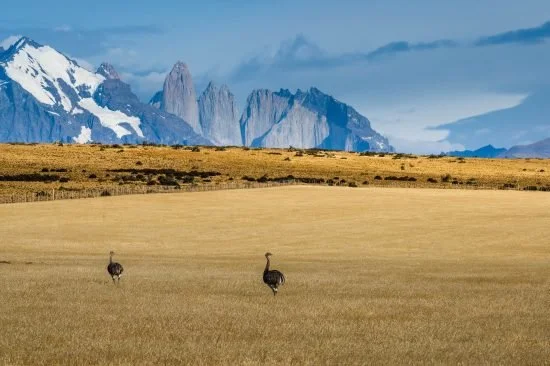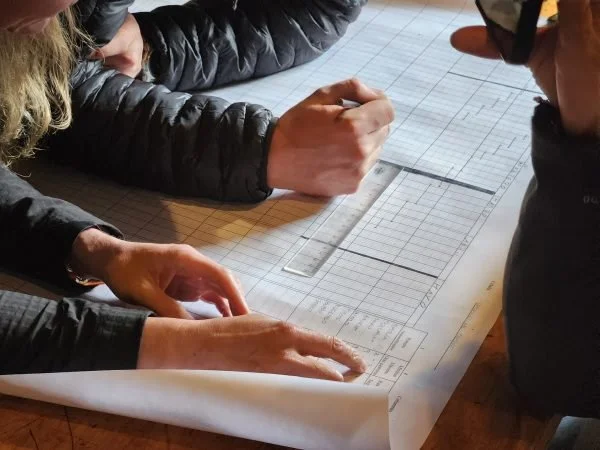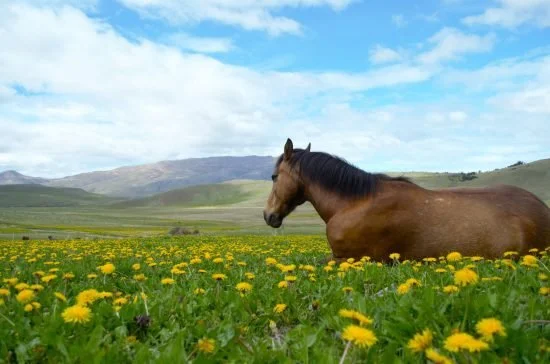Welcome to WordPress. This is your first post. Edit or delete it, then start writing!
Blog
-
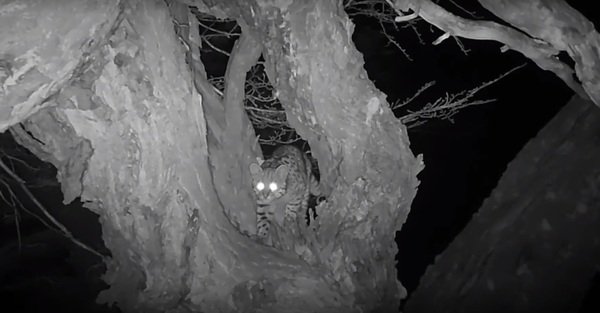
Go Deeper Stories: Alice’s Journey to Conservation
Alice Valenzuela arrived in Torres del Paine in 2015 with a dream: to explore one of the world’s most breathtaking natural wonders. Little did she know that her journey would lead her down a path of passionate conservation.
Between 2017 and 2022, Alice worked as a guide at Explora, where her fascination for capturing the behaviors of wildlife through trail cameras ignited. During her precious free moments, she scouted natural pathways, animal latrines, and hunting grounds for various species. Her goal was to set up these covert cameras and document the elusive fauna that often remained hidden during her tourist treks.
When the Explora Conservation Reserve project kicked off in Torres del Paine, Alice was among the first to volunteer, eager to become a ranger and protector of this pristine wilderness. She poured her heart into it.
Geoffroy’s cat
In her inaugural year living within the reserve, Alice continued her quest to capture extraordinary animal images. She achieved the seemingly impossible – heartwarming snapshots of Puma families and even one of the most elusive feline species, the Geoffroy’s cat.
Her exceptional dedication didn’t go unnoticed. In recognition of her remarkable contributions, Alice received a scholarship to study a diploma in wildlife monitoring. She’ll continue honing her skills, furthering her understanding of the park’s fauna, and contributing to the scientific knowledge of Torres del Paine’s delicate ecosystem.
Alice’s story is a testament to the power of passion and determination in conservation. She arrived with a dream, but now has become a guardian of the wild, dedicated to preserving the extraordinary territory of Torres del Paine for generations to come.
-
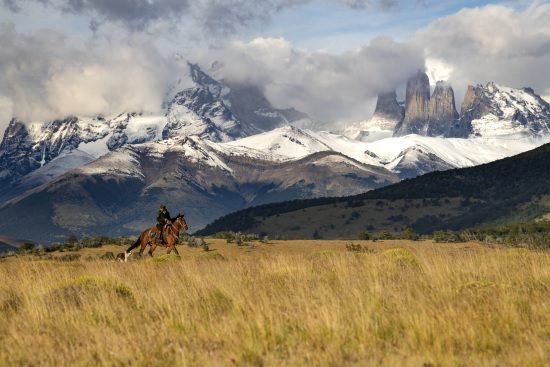
Amongst Mountains And Gauchos: An Incredible Journey Through Time In The Torres Del Paine Conservation Reserve
In the majestic landscape of Patagonia, to the northeast of Torres del Paine National Park and cocooned by the Cuernos del Paine and the Sierra Baguales peaks, exists an ecosystem of fascinating history and prehistory, rich biodiversity, and cherished local culture. This is nothing less than the Torres del Paine Conservation Reserve. Through innovative practices of tourism and conservation, such as regenerative cattle ranching, this unique territory today is being restored and protected for present and future generations.
Located just 1.3 km from Laguna Azul in the renowned Torres del Paine National Park, the reserve is home to 6,000 hectares of flourishing ecosystems. It´s almost as if the reserve was an extension of the Torres del Paine National Park itself. Located in the Region of Magallanes and Chilean Antarctica, it is here that the Patagonian steppe, the Andean desert, the pre-Andean scrubland and the Magellanic Forest coexist with various water sources such as the Zamora River and Las Chinas River, which snake across this vast and remote territory.
In 2019, the Explora team decided to embark on the conservation, protection and research of these southern most lands in the Americas. In these windswept, remote and silent mountains it was no coincidence that in the first scientific studies, 131 species of flora, 50 species of birds and 15 species of mammals were uncovered in the Torres del Paine Conservation Reserve.
To develop this project, we created an innovative alliance (corporate partnership) with The Nature Conservancy (TNC), an organization that has worked for conservation of territories around the world for decades, which will design and oversee the conservation plan.
Safeguarding the geological, paleontological, cultural and historical identity of this reserve for posterity therefore comes hand in hand with protecting its rich vegetation and animal species such as Chilean flamingos (Phoenicopterus chilensis), condors (Vultur gryphus), pumas (Puma concolor) and guanacos (Lama guanicoe).
The metamorphosis of a territory and its inhabitants
This territory with its expansive landscapes, wonderful mountain silhouettes and striking bodies of water was unrecognizable 65 million years ago. At that time, during the Mesozoic era, this reserve located in the province of “Última Esperanza” (Last Hope), was part of the supercontinent called Pangea and it was under water. This explains the presence of marine fossils today in the area.
Many millennia later, the region would undergo great deformations, giving rise to the Andes Mountains and, during the Cenozoic era, the expansion of glaciers that helped form the great lakes and mountainous reliefs we see today. Paula López Wood – writer, researcher and audiovisual producer with a master’s in creative writing from New York University – unpacked these ideas in a long-term investigation of the reserve.
“Small traces of the past concealed in geological formations such as Cerro Guido or Sierra Baguales, provide important signs of life from other periods of its great geological history,” writes López Wood, adding that the discovery of the iconic Milodon Cave, a few kilometers from the reserve, was one of the first historical landmarks in Patagonia that bridged the gap between science and tourism.
Some of the most significant prehistoric discoveries in the region by López Wood include the remains of a 15,000-year-old four-metre tall ground sloth (Mylodon darwini), the fossilised 129-139 million year-old remains of ichthyosaurs (a marine reptile) in the Tyndall Glacier, the 85 million year-old remains of Pachydiscus (a specie of large ammonite) in Cerro Toro and the 68 million year-old hadrosaurs (duck-billed dinosaur) in Cerro Guido.
Beyond the geological transformations and the ground breaking paleontological findings of López Wood, human beings only began to make their mark in this southern territory no more than 11,000 years ago. This timing is borne out by studies of archaeological discoveries in various Magellanic caves, including tools and rock art.
“From the work carried out in the areas surrounding the reserve, we know that the first settlers were small groups of hunter-gatherers who cohabited with the megafauna, living on a diet predominantly of guanaco. They probably disappeared with the same megafauna before another wave came to the region,” argues López Wood in her investigation.
Thanks to written accounts by Patagonian explorers and chroniclers in the late 19th and early 20th centuries, as well as recent anthropological studies, today we have insights into how the more recent indigenous groups, such as the Tehuelches, lived, interacted and migrated.
The heritage of cattle ranches and gaucho culture
The arrival of the first sheep to the region in 1876 from the Falkland Islands heralded the rise of the region´s renowned cattle ranches. From that moment on, the industry witnessed year-on-year growth due to increasing demand, and by 1910 animal husbandry had come to dominate much of the economy across the Magellanic landscape.
At the same time, gaucho (Patagonian cowboy) culture was taking root alongside the farmers and muleteers who worked on the ranches. The result was the creation of a culture of local landscape connoisseurs, knowledgeable in the remotest corners of Magallanes. “The life of the muleteers who worked in the current Conservation Reserve was solitary, hard and very connected to nature,” says Paula López Wood.
In the current territory where the Torres del Paine Conservation Reserve is located, there used to be three important cattle ranches. Estancia Santa Gemita enjoyed one of the most impressive aspects in the area, overlooking the majestic Paine Mountain Range. El Mercado was a small estate with an impressive lenga (Nothofagus pumilio) forest. The 2 de enero estancia was a large ranch and its buildings are preserved to this today.
Romina Da Pieve, assistant manager of Explora Conservation Reserves, says that part of the project to create the reserve included protecting the cultural heritage of the gaucho and Explora are therefore working closely with their nieghbouring communities. One of the initiatives includes renovating an old shearing shed to receive explorers who want to soak up the local culture. Its day-to-day running is managed by the gauchos.
“Inside the shed we have reconstructed its sheep-shearing gaucho history with computer graphics, old tools and insights into how the space was used¨, the manager explains. ¨What the pioneers did here in those desperately hard years of cattle ranching was nothing short of heroic¨, she adds.
Famous buildings such as Patagonia´s largest sheep shearing shed in Villa Cerro Castillo or the old slaughterhouse in Puerto Bories stand testament to the cultural importance of animal husbandry in the region.
Removal of fences, horses, and regenerative stockbreeding
Da Pieve was alive to see the area when the cattle ranches still operated and families still inhabited them. However, this was a time of change, and she saw the impact on the ecosystem when those families left and little by little the cattle were removed from the land.
“I was able to see, year by year, how a natural restoration of the grazing lands occurred by the simple act of giving them a break from the grazers”, the assistant manager notes. At the same time, ranchers were removing internal fences to repair the external ones that bordered their neighbors´ properties. Wherever this was practiced, it produced a further positive surprise-impact on biodiversity.
The use of horses to transport Explora guests proved yet another regenerative and innovative practice, with its positive impact on the reserve´s soil.
Gaela Hourcq, head of the Explora stables, explains how they allow the horses to roam free in certain sectors, and then rotate these areas depending on the soil situation. “They don’t lack food, but they don´t get to choose where to graze. This year we are testing their adaptability to the colder and more exposed areas”.
At Explora there are two types of horses: a Criollo, native to the area, very resistant to the harsh weather and wonderful to ride; and an Explora horse, which is a crossbreed of Thoroughbred and Chilean horse, which is then crossed again with an Arabian, resulting in a responsive and sure-footed animal.
Gaela Hourcq, head of the Explora stables, explains how they allow the horses to roam free in certain sectors, and then rotate these areas depending on the soil situation. “They don’t lack food, but they don´t get to choose where to graze. This year we are testing their adaptability to the colder and more exposed areas”.
At Explora there are two types of horses: a Criollo, native to the area, very resistant to the harsh weather and wonderful to ride; and an Explora horse, which is a crossbreed of Thoroughbred and Chilean horse, which is then crossed again with an Arabian, resulting in a responsive and sure-footed animal.
-
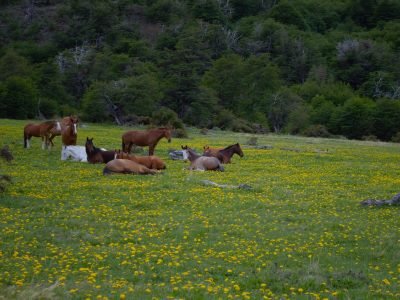
Regenerative Grazing: Soil Restoration In Torres Del Paine Conservation Reserve
The livestock industry has left a strong historical legacy in Chilean Patagonia. It was the pillar of the regional economy for almost a century, driving the construction of ranches and roads while opening waterways that not only allowed entering the territory more efficiently, but also improved its future connectivity.
All those years of livestock ranching caused the soil to erode and fall into neglect. This is why Explora decided to be a pioneer in the region and implement an initiative that seeks to help with the territory’s conservation and the recovery of soils.
This new initiative based on the principles of regenerative livestock husbandry was announced in October at the Torres del Paine Conservation Reserve, located northeast of the National Park by the same name, the objective of which is to bet on a more sustainable animal husbandry, enhancing their conservation work by breeding horses with the regenerative management technique
“For Explora, horses are an essential part of our value proposition, and we are convinced that their responsible management could have a real impact on both the environment as well as communities. We are working to break with the paradigm that keeping animals and conservation are mutually opposed,” Explora Conservation Reserves Manager Nicolás Vial said.
In our goal of being able to contribute to conserving the region’s territories, we have invited the community and the local authorities to participate in the talks to inform people on this technique. As of October, 70 local people had participated in the training, and we hope more people will join in what remains of 2022.
To undertake this initiative, we have sought the advice of José Manuel Gortazar, an expert in the subject who promotes a food and agriculture model focused on sustainable and responsible production. We are also working to obtain certification from the Savory Institute, an organization that is a global pioneer in regenerative livestock husbandry.
“I wanted to participate in this project because I was excited by the idea of a company from a totally different industry wanting to contribute to changing the perspective, to tearing down myths and showing best practices for other companies in the name of the future we need,” said José Manuel Gortazar, consultant to Explora on regenerative livestock husbandry methods.
Regenerative animal management
Explora has 30 horses in the Torres del Paine Conservation Reserve and began implementing the first regenerative techniques through strategic grazing in January 2022, which involves moving the animals strategically and respecting nature’s times and plans’ growth. “Regenerative livestock husbandry contributes to mitigating climate change because it revitalizes carbon sequestering by improving the ecosystem’s functioning. Lands that are managed with this technique sequester more carbon than those which are not,” Gortazar said.
The plan is designed together with the stable team and depends on factors as diverse as soil quality number of animals, staff available, types and number of fences nearby, among others.
One of the problems with the soil in the Torres del Paine National Park that there has been overgrazing in some regions, and undergrazing in others. “The plants that resisted overgrazing grew back, and since nobody ate them, they died of undergrazing. In this process the plants dry up and slowly oxidize, releasing carbon and becoming a super fuel for potential forest fires. In addition, plants generate methane gas during the decomposition process, which contributes to greenhouse gas emissions,” Explora Assistant Manager of Conservation Reserves Romina Da Pieve explained.
-
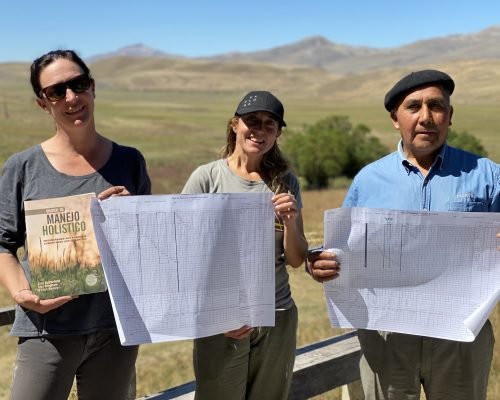
Regenerative Grazing
Strategic grazing is a little known technique in Chile and aims to conserve and improve soil productivity and animal welfare through grazing methods.
Generally speaking, it consists in rotating the animals strategically to respect nature’s times and the growth of plants, which are the food they need to eat.
Explora has 30 horses in the Torres del Paine Conservation Reserve and began implementing this type of grazing in January this year. Plans are designed based on many factors, such as soil quality, the number of animals, the staff available, the types and number of fences, among other things.
The Origins
In the 1960s, the biologist and farmer Allan Savory put forward the idea that proper livestock management should be based on imitating the behavior of wild herds of grazing animals. Thus, he came up with a planning system that helps ranchers and farmers to better manage agricultural resources to harvest in a sustainable and regenerative way.
In 2009 he created the Savory Institute to accelerate the global process of regenerative grazing by supporting an international network of leaders and innovators committed to serving their regions with the highest standards of training and support for the implementation of this plan.
Let’s get to work
Romina da Pieve, Explora Assistant Manager of Conservation Reserves, explained that, along with Explora’s stable chief Gaela Hourcq, one of the reasons for adopting this plan, and which is aligned with the company’s commitment to preserve the places it is in, is that the same horses that are kept there could be used to improve the soils, because when they were let free, they would often go to wetlands and step on the eggs of other animals, or they would eat too much in a given area, causing the plants not to grow back again. For this reason, the support and willingness of the stable team in Torres del Paine to implement this technique, which is new for everyone, was fundamental.
“We obtained advice from José Manuel Gortazar, owner of the Fundo Panguilemu – which promotes an agricultural model focused on sustainable and responsible production – and were certified by Efecto Manada, the Savory Institute’s representatives in Chile. We installed sensors that will help us measure soil conditions in three aspects: biodiversity, coverage and soil carbon,” commented Explora’s assistant manager of conservation reserves.
Explora is currently implementing its second grazing plan. Planning is done twice a year; once for the winter season and once for the summer. It hopes to have the first data that gives account of the benefits of the work is has been doing by March 2023.
Romina da Pieve explained that all the work is done by the horses. The land was divided into 16 plots, which guarantees the plants enough rest to grow back again.
The horses leave their manure and step all over, mixing everything with the soil. The footsteps also help to aerate the ground, which allows it to rest better until next season arrives, when it will be more fertile and healthier than when they left it.
The main problems with the soil in the Torres del Paine National Park are from overgrazing on the one hand, and undergrazing on the other. “The plants the plants that resisted overgrazing grew back, and since nobody ate them, they rotted due to the lack of herbivores in the area. We have a lot of dry material that poses a fire hazard. In addition, in the decomposition process due to the lack of herbivores, the plants generate methane gas that contributes to greenhouse gas emissions,” the Explora assistant manager of Conservation Reserves explained.
At Explora we believe that this pilot project can also serve as a lesson for our neighbors, whom we have invited to participate in talks and with whom we will share the results and lessons learned.

